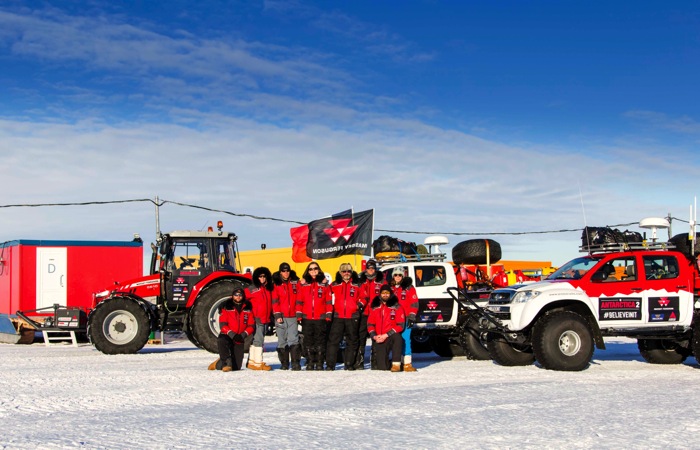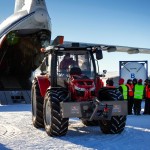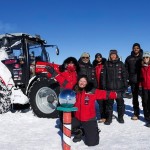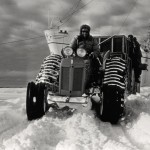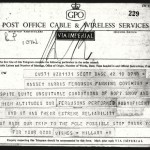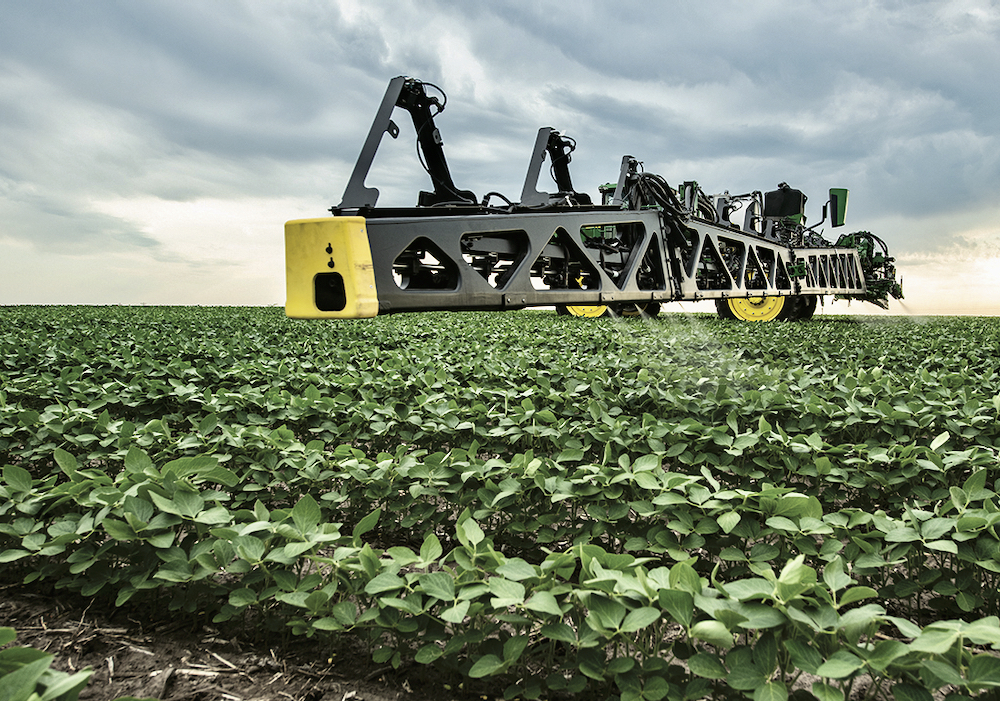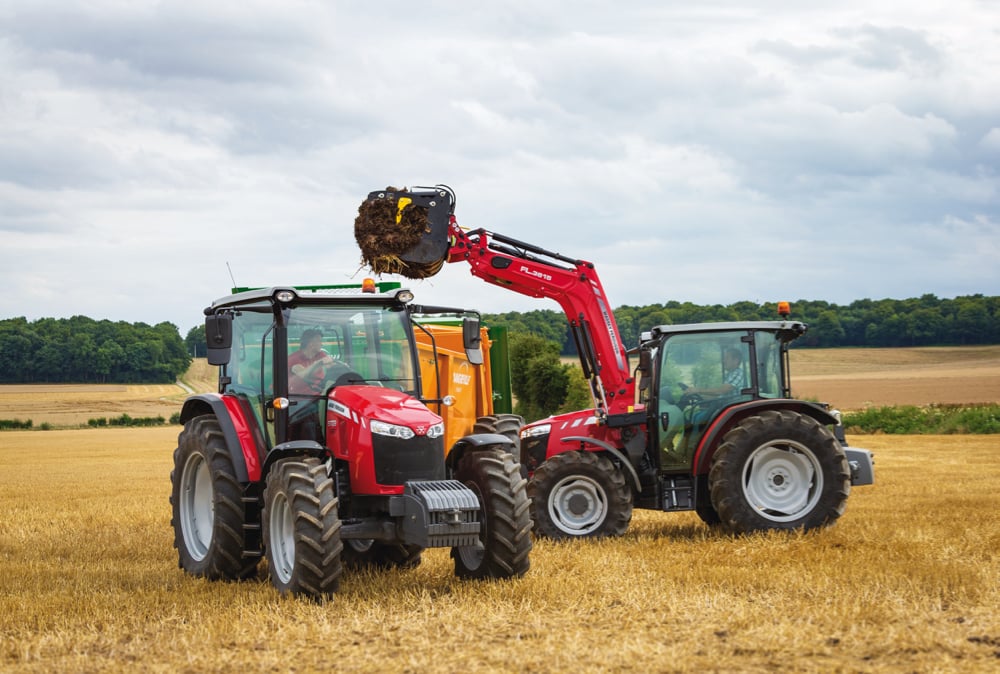At the North Pole, it was December 9, and the jolly old elf in the bright red suit was preparing as usual for his annual Christmas Eve sleigh ride. A world away, meanwhile, and even more incredibly, an expedition aboard a bright red Massey Ferguson 5610 tractor was powering its way to the geographic South Pole, following the path of explorer Sir Edmund Hillary.
This latest adventure, dubbed Antarctica2, was really the culmination of a marathon tractor trip that originated in Holland several years ago when 38-year-old Manon Ossevoort, a Dutch actress and adventurer, embarked on a solo trip, driving a tractor 38,000 kilometres from her native Holland to Cape Town, South Africa.
Read Also
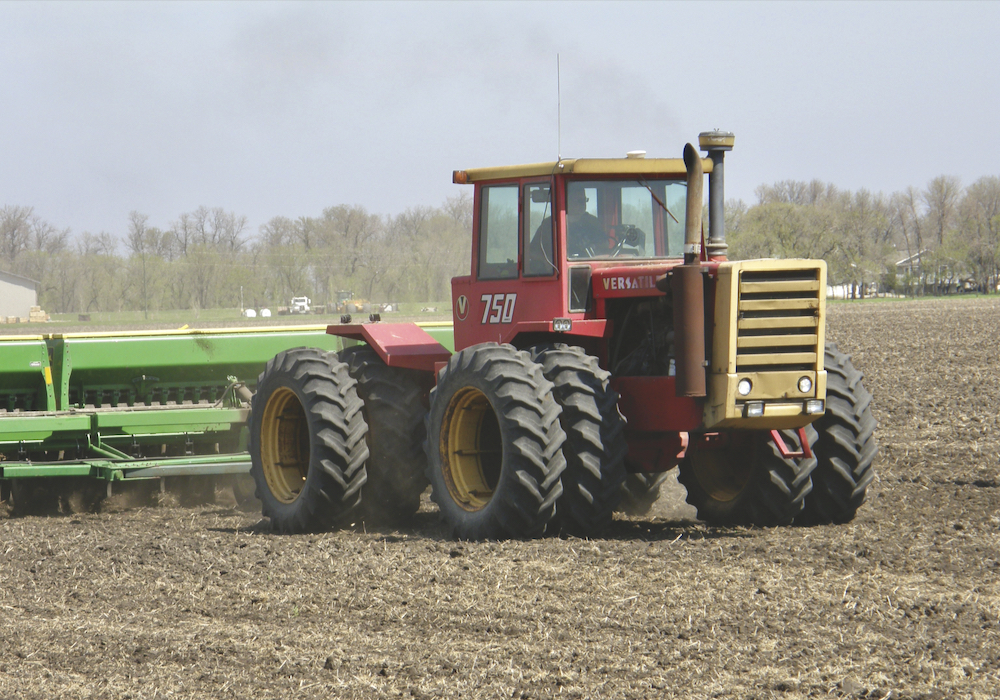
Summer Series: Old machines,new technology
One of my first jobs was working as a mechanic’s helper at a farm equipment dealership in the late 1970s….
Although Ossevoort had wanted even then to continue south, there was an obvious obstacle. Africa ends at the Cape of Good Hope.
“It was my dream to drive a tractor to the end of the world, and I was inspired by Sir Edmund Hillary’s mission,” Ossevoort tells me, “I found that along the way my journey inspired other people to talk about their own dreams, so I set about collecting these dreams with the goal of taking them to the South Pole with me.”
When Ossevoort asked the MF distributor in Holland if they would partner with her to complete the final leg of her trip across Antarctica, they and AGCO’s entire European division decided to wholeheartedly jump on board. It’s not hard to see why.
The potential bragging rights were enormous. And in an era of social media, the global exposure for the brand has been immeasurable. Corporate press releases relating to the expedition began flying as early as February 2013.
“The latest broadcast and social media technology will also be employed… ” declared one of the early press releases. After the team got underway, live streaming and regular updates via a dedicated website kept the world informed of the mission’s progress, along with tweets, emails and satellite telephone calls.
“It’s wonderful that the partners involved in Antarctica2 committed to support my idea,” says Ossevoort. “It wouldn’t have been possible without them. This collaborative effort to take on a challenge of this magnitude really encapsulates the spirit of the expedition.”
“Antarctica2 is a bold and exciting mission full of exceptional challenges, and we are extremely proud to be part of it,” pipes in Richard Markwell, vice-president and managing director, Massey Ferguson Europe, Africa, Middle East. “It fully reflects the spirit of our brand and our desire to achieve, no matter how difficult or demanding the path may be.”
- The Massey Ferguson tractor exits the cargo plane.
- Lead driver, Manon Ossevoort (front), and the expedition team at the geographic South Pole.
- Sir Edmund Hillary’s original 1958 trip to the pole used Ferguson tractors equipped with tracks.
- Hillary’s cable to Harry Ferguson in 1958.
The Antarctica2 moniker comes, in part, from the fact this is the second time a South Pole expedition used MF tractors. Hillary’s original 1958 trek was made with Ferguson TE20 tractors fitted with tracks, and he actually sent a telegram from the South Pole thanking Harry Ferguson for use of the machines — using the mid-twentieth century version of social media.
But this time, the MF tractor donated to the cause was the subject of some pretty serious technology development and testing to make sure it would survive the tough polar conditions, which saw windchill values dip into the -50 C range, despite the fact it’s summer in that hemisphere.
There’s no disputing, though, that this expedition was well prepared.
“Our Massey Ferguson engineering team has created the ultimate polar tractor to help the expedition tackle the elements,” said Campbell Scott, Massey Ferguson director of sales engineering and brand development.
To create it, some of the hours devoted to the project by AGCO engineers were spent on their own time. They drew on expertise from Arctic Trucks, a specialty off-road truck builder that originated in Iceland, which also supplied two modified Toyotas to the expedition.
Team members received training from seasoned polar explorer and Canadian resident Matty McNair and her daughter Sarah McNair-Landry, who also joined the Antarctica2 crew. The tractor and team spent time in Canada and Iceland preparing for the trip to the pole.
The expedition also partnered with Castrol and Trelleborg. Castrol provided severe duty lubricants, while Trelleborg worked with the MF engineering team to develop a special, multi-purpose set of ag tires. The engineering team claims tires are more efficient for this kind of expedition than tracks because they are capable of higher speeds, reduce fuel consumption and also provide suspension.
To keep the Castrol lubricants flowing inside the tractor, special heater lines were fitted around the chassis to maintain higher oil temperatures and to reduce viscosity.
Plus, to keep it moving in severe temperatures, the tractor ran on jet A1 fuel.
The two Toyotas followed the tractor in the polar convoy to transport team members, supplies and about 1,000 kilograms of AGCO parts, just in case. To watch for the development of any potential problems, the team gave the tractor twice-daily maintenance checks. However, it apparently logged well over 700 engine hours, virtually trouble free, despite the conditions.
The tractor’s telematics system relayed a live stream of performance data back to engineers manning a 24-hour support team at the factory in Beauvais, France.
“The journey will demonstrate tenacity, engineering skills, reliability, teamwork and achievement,” said Scott before the expedition began, “… members of the expedition team bring an ideal range of skills and experience to the project.”
The expedition route started at Novo Base on Antarctica’s east coast. The first section involved a steep climb from the coast up through a mountain range. Then there was a region of dangerous glacier crevasses to cross. At the summit, the route was 3,400 metres above sea level. After putting the mountains behind them, the final leg to the South Pole was less arduous, but there was a risk of being slowed down by sastrugi (sharp snow ridges), blizzards and whiteouts.
After reaching the Pole, the expedition had time for a brief celebration before turning around to retrace their path back to Novo Base and catch a ride home on a cargo plane. Ossevoort says she built a snowman at the pole to symbolically embody all those dreams she “collected” along her entire trip.
“As John F. Kennedy said about the mission to the moon in 1962, ‘we choose to do these things, not because they are easy, but because they are hard,’” said Markwell. “This is Massey Ferguson, wanting to take on a challenge and work in the spirit to achieve not only easy things, but challenging things.”
Of course there is bound to be much more in this for everyone than simply the sense that they were able to meet a challenge. For Ossevoort, it’s a dream fulfilled. For AGCO and the other corporate partners, there are enormous opportunities for brand marketing that are certain to spin off.
At the EIMA show in Bologna, Italy in November, a stand-in tractor made to look frost covered was the centre of AGCO’s display. After the original 5610 gets back to Europe, it will certainly make the rounds through all the upcoming major farm machinery events in the coming year. It or another stand-in tractor is even bound show up on this side of the Atlantic for a victory tour.
It’s a win for everyone.


